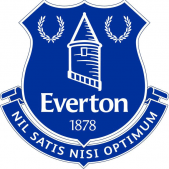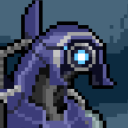Leaderboard
Popular Content
Showing content with the highest reputation on 04/12/21 in Posts
-
Just a friendly reminder everyone, discussing how to circumvent other vendors licensing will get content removed / banned from this forum. Tread lightly here3 points
-
Please provide the instructions for doing this in the Official Unraid Manual (the one you get to by clicking lower right-hand corner of the GUI) and not just in the release notes of the version number when the changes are introduced. Remember that many folks are two or three releases behind and then when they do upgrade they can never seem to locate the instructions which results in unneeded queries that the folks who provide most of the support for Unraid have to deal with. Having an updated manual section that deals with these changes makes pointing these folks to find what they will have to change a much similar task... EDIT: I would actually prefer that you link directly to the manual sections in the change notes. That way the information will be available in the manual when the changes are released!2 points
-
PLEASE - PLEASE - PLEASE EVERYONE POSTING IN THIS THREAD IF YOU POST YOUR XML FOR THE VM HERE PLEASE REMOVE/OBSCURE THE OSK KEY AT THE BOTTOM. IT IS AGAINST THE RULES OF THE FORUM FOR OSK KEY TO BE POSTED....THANKYOU The first macinabox is now been replaced with a newer version as below. Original Macinabox October 2019 -- No longer supported New Macinabox added to CA on December 09 2020 Please watch this video for how to use the container. It is not obvious from just installing the container. Now it is really important to delete the old macinabox, especially its template else the old and new template combine. Whilst this wont break macinabox you will have old variables in the template that are not used anymore. I recommend removing the old macinabox appdata aswell.1 point
-
This release contains bug fixes and minor improvements. To upgrade: First create a backup of your USB flash boot device: Main/Flash/Flash Backup If you are running any 6.4 or later release, click 'Check for Updates' on the Tools/Update OS page. If you are running a pre-6.4 release, click 'Check for Updates' on the Plugins page. If the above doesn't work, navigate to Plugins/Install Plugin, select/copy/paste this plugin URL and click Install: https://s3.amazonaws.com/dnld.lime-technology.com/stable/unRAIDServer.plg Bugs: If you discover a bug or other issue in this release, please open a Stable Releases Bug Report. Thank you to all Moderators, Community Developers and Community Members for reporting bugs, providing information and posting workarounds. Please remember to make a flash backup! Edit: FYI - we included some code to further limit brute-force login attempts; however, fundamental changes to certain default settings will be made starting with 6.10 release. Unraid OS has come a long way since originally conceived as a simple home NAS on a trusted LAN. It used to be that all protocols/shares/etc were by default "open" or "enabled" or "public" and if someone was interested in locking things down they would go do so on case-by-case basis. In addition, it wasn't so hard to tell users what to do because there wasn't that many things that had to be done. Let's call this approach convenience over security. Now, we are a more sophisticated NAS, application and VM platform. I think it's obvious we need to take the opposite approach: security over convenience. What we have to do is lock everything down by default, and then instruct users how to unlock things. For example: Force user to define a root password upon first webGUI access. Make all shares not exported by default. Disable SMBv1, ssh, telnet, ftp, nfs by default (some are already disabled by default). Provide UI for ssh that lets them upload a public key and checkbox to enable keyboard password authentication. etc. We have already begun the 6.10 cycle and should have a -beta1 available soon early next week (hopefully).1 point
-
DEVELOPER UPDATE: 😂 But for real guys, I'm going to be stepping away from the UUD for the foreseeable future. I have a lot going on in my personal life (divorce among other stuff) and I just need a break. This thing is getting too large to support by myself. And it is getting BIG. Maybe too big for one dash. I have plenty of ideas for 1.7, but not even sure if you guys will want/use them. Not to mention the updates that would be required to support InfluxDB 2.X. At this point, it is big enough to have most of what people need, but adaptable enough for people to create custom panels to add (mods). Maybe I'll revisit this in a few weeks/months and see where my head is at. It has been an enjoyable ride and I appreciate ALL of your support/contributions since September of 2020. That being said @LTM and I (mostly him LOL) were working on a FULL Documentation website. Hey man, please feel free to host/release/introduce that effort here on the official forum. I give you my full blessing to take on the "support documentation/Wiki" mantel, if you still want it. I appreciate your efforts in this area. If LTM is still down, you guys are going to be impressed! I wanted to say a huge THANK YOU to @GilbN for his original dash which 1.0-1.2 was based on and ALL of his help/guidance/assistance over the last few months. It has truly been a great and pleasurable experience working with you man! Finally, I want to say a huge thanks to the UNRAID community and its leadership @SpencerJ @limetech. You guys supported and shared my work with the masses, and I am forever grateful! I am an UNRAIDer 4 LIFE! THANKS EVERYONE!1 point
-
1 point
-
Honestly this is pretty cool and I'm going to use it myself, thank you 😁 Just as a warning to anyone who decides to use this it's definitely worth taking note of above: This script also assumes your Default VM storage path is /mnt/user/domains/, if it's not, it will create a share called domains unless you update the references to this path. Also note that VM Manager needs to be started before you run the script if you are using the default Libvirt storage location which is a disk image that gets mounted when you start VM Manager. Otherwise when it gets started /mnt/user/domains/save will be bound to a location that no longer exists, and you'll possibly either get errors when pausing a VM or the local location won't have any data saved in it. So if you accidentally run the script with VM Manager stopped, you need to need to run the script again after starting it, or specifically the line: mount --bind /mnt/user/domains/save /var/lib/libvirt/qemu/save Also to revert to the original option I'm pretty sure you can just restart; or make sure no VMs are paused and run: sed -i -e "s/domain_save/domain_suspend/" /usr/local/emhttp/plugins/dynamix.vm.manager/include/VMajax.php You can then safely delete /mnt/user/domains/save which will likely be empty. I'm not going to include the code for deletion here in case someone makes a typo and deletes the contents of their array. Also there is a possibility that this will get broken / possibly become slightly dangerous in a new release, to be clear this is tested as working on versions 6.8.3 - 6.9.2. If anyone is really interested in making the change permanent; it appears relatively un-breaking and straight-forward to implement so like @bonienl said, best to make a feature request. This mount option has the benefit of not wasting space in libvirt.img, so if someone makes a feature request definitely reference @uek2wooF's script, because it's awesome.1 point
-
And just to be clear, the opposite of this kind of pause is "start". And yes the gui pause and start will work for this after running the userscript. And yes run the userscript at array start. The save file is removed after unpausing ("start"ing).1 point
-
1 point
-
I will change my github nickname to reflect my name, but before i must finish the whole translation and then make a .zip and test it on my system before, i must install 6.9.2 to test it or i can read all theses messages by using v6.9.1 ?1 point
-
Ha! Yeah I realize you are the same guy now. I was reading too quickly and overlooked that. Thanks again for the help! I will be ordering a dummy plug.1 point
-
Wow! This forum is awesome. Such quick replies and willingness to help! Well, I am not sure which step got it to work but thanks to you both! When I initially tried the steps suggested by TAFKA Gridrunner it did not work. I had not yet restarted at that point though. So I restarted and in the meantime noticed SI1's response. I had not even thought to test it out using a real monitor! I made no further changes expect hooking it up to the monitor. And it all booted up just fine! Thanks to you both! I had been working on this one thing for almost 2 whole days to this point. EDIT: A little premature celebration but hope you guys can help here. SO my goal is to have this computer in a separate room without a monitor. I have noticed that all I have to do is plug in the P2000 to a monitor and it works on both a real monitor and Splashtop. My dilemma then is how do I get this to work without having a monitor connected to it at all times?1 point
-
1 point
-
1 point
-
Problem solved. I'm documenting this in case someone runs into the same issue. The last 2 lines had already been removed from the go file. touch /boot/config/modprobe.d/i915.conf worked, and I've rebooted since just to be safe, but the graphics card was still not working with Intel GPU Top nor GPU Statistics. I then noticed that my Windows VM was set to iGPU. I stopped the VM, changed this to VNC and re-started the VM. Boom. Everything is working. So there you go, if you're having a similar problem, make sure your VMs aren't using the iGPU.1 point
-
No worries man take your time. You are doing awesome work and I appreciate it.1 point
-
Du kannst die Logs auf den USB Stick schreiben lassen. Das habe ich grundsätzlich aktiv.1 point
-
For those with the startup script errors: I just redownloaded a configuration file from PIA website, deleted the old one, and restarted Deluge and it seems to have fixed it. It looks to me that they renamed it to exclude the "nextgen-" from the file name. I don't know if that matters.1 point
-
Have you tried the default password incase it reset in the update? deluge is the default1 point
-
Hi @lnxd, thanks for checking, it at least confirms in not doing anything obvious and it should "just work". FYI no CPU maxing out, just for the first few seconds during bios start and then it all levels out. I have previously done the vendor ID, but i will re-do again as well as the other options as that was when i first started troubleshooting so i may have missed something out, i will let you know how i get on. The disablement of the SR-IOV in the BIOS was a line of thought i had been down in before, but made no difference @giganode Unfortunately yes, using the tech power up (or completely removing the vbios) had no change on the issue. First VM start no issues, all subsequent reboots/starts gives me a code43 until host restart.1 point
-
Not arguing against docker-compose, but as a general rule, docker is docker is docker, and there aren't really any "Unraid Specific" images present.1 point
-
Hatte ich ja versucht. Bin auch der Meinung, dass ich das getan hätte, aber ich habe ja hier erfahren, dass CA evtl. nicht sauber arbeitet. Muss ich heute Abend nach der Arbeit mal schauen. Melde mich, wenn ich es getestet habe. --------edit-------- ich habe mal wieder den container gelöscht und mit CA den Ordner gelöscht. Dieses Mal nachgeschaut und der Ordner ist wirklich gelöscht. Neu installiert und ich konnte die Seite wieder nicht laden. Das ganze mache ich über Safari auf einem Mac. Dann nichts verändert und parallel über Chrome auf die Seite zugegriffen und es geht! Danach ging es auch auf Safari. Ich raff es nicht, aber es läuft. --------edit2------- hmmm, hab gedacht ich könne die Sprache auf deutsch umstellen. In der Config gibt es die Zeile: language: "en", Ich habe mal "de" eingetragen. Geht aber nicht. Zurück auf "en" geändert und nichts läuft mehr. Ganz seltsam. Selbst wenn es nicht "de" heisst, dann müsste es doch wenigstens zurück auf "en" laufen.1 point
-
I would like to apologize to everyone for the way I posted my frustrations. I truly regret it and I deserve to. After a couple of days of testing, I was very happy that the UnRAID OS never failed in the slightest. The WebUI might be a different story. To be brief; I provisioned an SSL certificate via UnRAID and then didn’t want the “public” record of my WebUI address being available (least of all via “unraid.net”). My valid/proven “unraid.mydomain.tld” certificate worked (for a bit?), but it has no DNS/Public record. I’m pretty sure this screwed up the UnRAID flash drive’s ability to (phone home) confirm my valid license. The “account” comment was regarding the UnRAID WebUI pushing the “key.unraid.net” certificate. Again, I’m very sorry. I keep thinking this stuff is simple, but it’s not. 6.1 point
-
Puh ipv6 nutz ich in Unraid nicht, da weiß ich jetzt gerad auch nicht weiter1 point
-
I connected all the power cords for the cpu and the motherboard, and later found out that it was a memory problem.1 point
-
For unraid, I think the obvious configuration would be an array with 1 parity using the 3.5HDD, giving you 12TB storage and then the 1TB NVME as Cache Pool. Appdata (used by Docker Containers) and Domain (used by default for VMs) shares will automatically be configured to use the cache pool.1 point
-
Ding...ding...winner-winner, chicken dinner back to 6.9.1 and it works.......thanks again1 point
-
Thanks all. I went ahead and renamed the network.cfg file and as hoped, and Unraid created a new one. I'm now able to access my shares files and am in the process of copying them over to my new unraid server.1 point
-
Updated from 6.9.1 -> 6.9.2 smoothly with all dockers up and running with no issues (knock on wood).1 point
-
You guys, this is the weirdest thing. My UnRaid server has a 6800 and a 6800XT. Both have been working perfectly since February. Yesterday, I installed water blocks on both cards. Since I did that, now, reset doesn't work anymore. If I reboot the VM, the display doesn't come back, and one CPU thread assigned to the VM gets stuck at around 87%. Changing the cooler on these cards couldn't possibly cause this, right? The only other thing I did was install an NVME SSD in the M.2 slot. Do you think that could cause reset to fail for both cards? Edit: False alarm. It was because the new SSD changed the IOMMU groups and for some reason, UnRaid stopped stubbing the serial bus controller for each card. This was causing reset to not work. Just in case anyone needs to know, or in case I forget this again (lol), these are the devices that need to be passed through for an AMD reference card. Obviously, your PCIe IDs will be different. AMD Radeon RX 6800/6800 XT / 6900 XT (0a:00.0) AMD Device (0a:00.1) <--- sound card AMD Device | USB controller (0a:00.2) AMD Device | Serial bus controller (0a:00.3)1 point
-
nope, all good as long as you dont put extra stuff manually in the /www folder, then you should know what you doing.1 point
-
Still 43? sudo apt install backport-iwlwifi-dkms Did you try this one?1 point
-
@xthursdayx It is actually much easier than that. Simply copy the contents of your "/mnt/user/appdata/rutorrent/rtorrent/rtorrent_sess" into the following folder : "/mnt/user/appdata/binhex-rtorrentvpn/rtorrent/session" Everything should be good to go.1 point
-
1 point
-
So I updated to 21.0.1 today and I had a few errors after. I will address them here and I hope they will help others to fix them quick. I had errors referring to my nginx config /.well-known/carddav, caldav, webfinger etc. Here is my nextcloud nginx config section about that location ^~ /.well-known { location = /.well-known/carddav { return 301 /remote.php/dav/; } location = /.well-known/caldav { return 301 /remote.php/dav/; } location = /.well-known/webfinger { return 301 /index.php$uri; } location ^~ /.well-known { return 301 /index.php$uri; } try_files $uri $uri/ =404; } I had them different before and apparently they do not work in this version. Also I had an error reffering to some db indices. Fo these you go into nextcloud container console and run sudo -u abc php /config/www/nextcloud/occ db:add-missing-indices And another one was reffering to default phone region. You have to add your phone region in config.php 'default_phone_region' => 'GB', You have to replace GB with your country specific code. You can find it here I hope this is useful info.1 point
-
We're working on a design that lets driver plugins be automatically updated when we issue a release.1 point
-
@ich777 will update them when he awakes. He is on the other side of the world1 point
-
1 point
-
This has nothing to do with it, since the Penryn emulated cpu is within the vm, and you need nested virtualization enabled in the host. As far as I know this is still not possible (and I doubt it will be in the future..) in mac os + amd cpu (mac os Hypervisor.framework doesn't support AMD-V). Moreover you can't have nested virtualization with emulated cpu, you need host-model or host-passthrough, which with amd can be quite complicated.1 point
-
1 point
-
It has been some time since I visited the Unraid forums. Due to health issues I had to take a break, and unfortunately this break took way longer than anticipated. But I am back and will start giving support again to Unraid and plugins. First step is an update to the s3_sleep plugin, which now supports the latest features of Unraid 6.9 properly. Please update this plugin if you are running Unraid 6.9.0 or higher. I need to do a lot of catching up, but feel free to post issues with the Dynamix plugins here and I will look into it.1 point
-
I know that this is an old post, but for everyone who still has the same problem of rtc working on the 1st day and not the second, this is my version of the code: echo 0 > /sys/class/rtc/rtc0/wakealarm time=5:58 now=$(date +%s) other=$(date -d $time +%s) if [ $now -ge $other ] then echo `date '+%s' --date='tomorrow 5:58:00'` > /sys/class/rtc/rtc0/wakealarm else echo `date '+%s' --date='today 5:58:00'` > /sys/class/rtc/rtc0/wakealarm fi This resets the rtc clock which will make the code work every day. echo 0 > /sys/class/rtc/rtc0/wakealarm I use this code because the rtc function in my bios doesn't wake UNRAID from sleep. But this code worked a treat! If you wish to change the time, change all of the time values to your desired time. This code also has to be placed in the 'custom commands before sleep' text box.1 point
-
I purchased the ASRock Rack E3C246D4U and there is a way to enable the iGPU without installing the beta BIOS. I'm currently running P2.30 with iGPU enabled. There is a key combination you need to press when booting your system. After powering on the boot splash screen will display the ASRock Rack image and the message “Updating FRU system devices”. When you see "Updating FRU system devices" press ctrl+alt+F3 and it will load the BIOS menu. In BIOS menu, you will see an additional page labeled IntelRC Chipset. Select System Agent (SA) Configuration, then Graphics Configuration, and then Enable IGPU Multi-Monitor.1 point
-
Here is another key element to the UUD Version 1.5. This new datasource should have been created WITHIN GRAFANA if you follow Varken's default installation instructions. However, I thought it would be helpful for everyone to see it! NEW DATASOURCE FOR THE UUD 1.5 (VARKEN): Once setup, you should see 2 datasources. The default one we used for UUD 1.4 and prior (yours may be named differently than mine), and the new one named "Varken" which will be required for UUD version 1.5 onward if you want real time Plex monitoring.1 point
-
Same. I now have catalina (instead of Big Sur which is what I chose) running though and I see the apple update thing for Big Sur. Can I update from with Mac OS Catalna to Big Sur or is that gonna cause problems? **EDIT** I completely deleted then reinstalled the container with method 2 instead of just changing after the vm was installed and it worked.1 point
-
There are a few in this thread that have the same array/shutdown issue, but you've got a point that it may not be enough to pull it immediately. There is another thread on this forum about the startup message, and I cannot fathom how many people might be experiencing "can't shutdown" issues. I know I searched through the forum enough times and trawled through logs to find my own conclusion. Still, I still think it's important to highlight this link, so that others might find it. I disagree that this doesn't warrant further discussion, it definitely does, but certainly less about the developer abandoning his project. I've been trying to investigate the codebase to find why the issues are encountered, already posted some of my own findings, and I would encourage anyone with deeper knowledge of unraid to chime in on this as maybe it can be fixed and submitted as a pull-request to the repo.1 point
-
1. I understood the BETA nature of this plugin before using it (Please refer to the 1st line in the 1st post of this thread). 2. I have already been using the userscript version, since I found the plugin to be unstable. 3. It is important to report these issues so that: - others can know the unstable issues before using it, SO THAT THEY DON'T LOSE DATA FROM AN UNSTABLE SYSTEM. - The developer can work with those who want to find and test a fix. @Stupifier Not to be rude, but your response helps nobody. I have submitted my findings and report of what I've seen so far in this thread, so that the dev can help the people encountering strange unrelated errors and system instability. If you have something constructive to add to the discussion, please do so.1 point
-
The problem is when you have something like this https://github.com/mailcow/mailcow-dockerized/blob/master/docker-compose.yml It would be nice to have in dockerman a way to configure something the way docker compose does it, as a group. In the UI all the dockers could be nested in only one, and lets say you will configure all the dockers in the same template. It should be hard since more changes are in the UI. Somehow dockerman teamplates could be as a dockercompose yml1 point
-
I've tested these two options; 1) this Piwigo docker, accessing a separated mariadb instance. Rather complex and slow loading large amounts of images. 2) Piwigo, mariadb, nginx, php-fpm and CSF, all on 1 debian minimal VM. Both instances of piwigo access the exact same folders from an unraid share with terabytes of imagefiles. The second option performs noticeably faster, even without doing proper IO tests etc. The difference is so obvious, that I'm not even going to bother testing it with tools. Could be because I run unraid with a decent Xeon and 32GB RAM, but still; I don't see any advantage over docker instances for piwigo, and I just wanted to share that, because frankly, setting up piwigo in that VM was so much easier, other than maybe using a little fewer resources I don't understand what all the fuss on having it as a docker instance is about. The SSL/TLS cert for NGINX is located in an Unraid Share with Unraid Mount tag in the VM. Same LetsEncrypt wildcard cert I use for the unraid UI. So no weird proxying or network complexities. Plus, a csf/lfd firewall in front of the piwigo server VM, allowing me to serve the stuff through my internet-router to the world.1 point
-
09 Dec 2020 Basic usage instructions. Macinabox needs the following other apps to be installed. CA User Scripts (macinabox will inject a user script. This is what fixes the xml after edits made in the Unraid VM manager) Custom VM icons (install this if you want the custom icons for macOS in your vm) Install the new macinabox. 1. In the template select the OS which you want to install 2. Choose auto (default) or manual install. (manual install will just put the install media and opencore into your iso share) 3. Choose a vdisk size for the vm 4. In VM Images: Here you must put the VM image location (this path will put the vdisk in for the vm) 5. In VM Images again : re enter the same location as above. Here its stored as a variable. This will be used when macinabox generate the xml template. 6. In Isos Share Location: Here you must put the location of your iso share. Macinabox will put named install media and opencore here. 7. In Isos Share Location Again: Again this must be the same as above. Here its stored as a variable. Macinabox will use this when it genarates the template. 8. Download method. Leave as default unless for some reason method 1 doesnt work 9. Run mode. Choose between macinabox_with_virtmanager or virtmanager only. ( When I started rewriting macinabox i was going to only use virtmanager to make changes to the xml. However I thought it much easier and better to be able to use the Unraid vm manager to add a gpu cores ram etc, then have macinabox fix the xml afterwards. I deceided to leave vitmanager in anyway, in case its needed. For example there is a bug in Unraid 6.9.beta (including beta 35.) When you have any vm that uses vnc graphics then you change that to a passed through gpu it adds the gpu as a second gpu leaving the vnc in place. This was also a major reason i left virtmanger in macinabox. For situations like this its nice to have another tool. I show all of this in the video guide. ) After the container starts it will download the install media and put it in the iso share. Big Sur seems to take alot longer than the other macOS versions. So to know when its finished goto userscripts and run the macinabox notify script (in background) a message will pop up on the unraid webui when its finished. At this point you can run the macinabox helper script. It will check to see if there is a new autoinstall ready to install then it will install the custom xml template into the VM tab. Goto the vm tab now and run the vm This will boot up into the Opencore bootloader and then the install media. Install macOS as normal. After install you can change the vm in the Unraid VM Manager. Add cores ram gpu etc if you want. Then go back to the macinabox helper script. Put in the name of the vm at the top of the script and then run the script. It will add back all the custom xml to the vm and its ready to run. Hope you guys like this new macinabox1 point




























